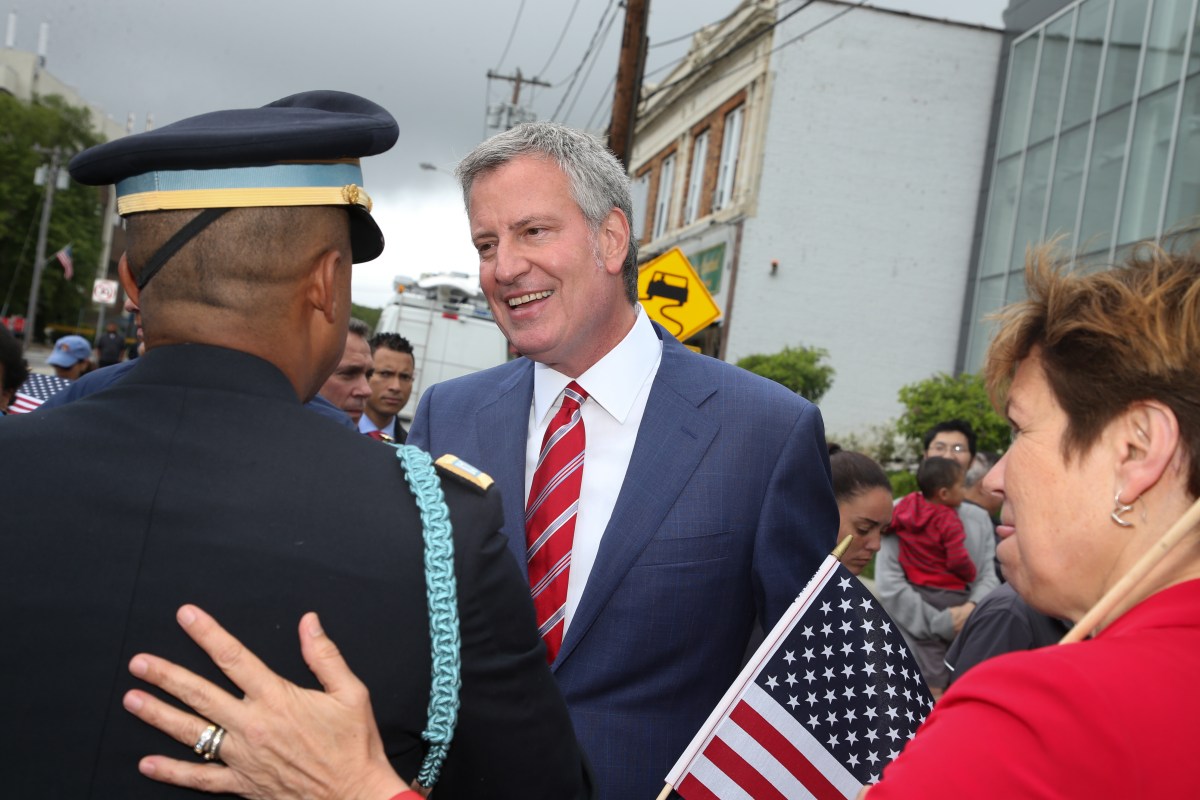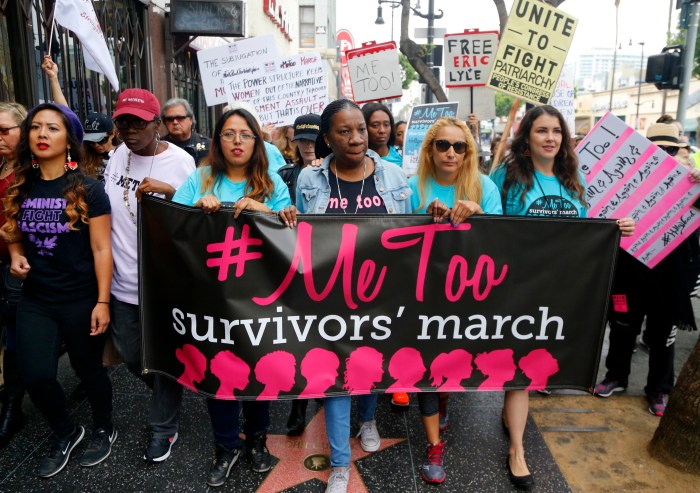Mayor Bill de Blasio appears to be cruising to re-election, according to the latest Quinnipiac University poll released on Oct. 5 — but here in Queens, more than half of those surveyed feel he doesn’t deserve a second term in office.
Citywide, the poll found that 61 percent of likely voters want four more years from the Democratic incumbent, way ahead of three challengers: Republican Assemblywoman Nicole Malliotakis of Staten Island (17 percent), Reform Party candidate and former City Councilman Sal Albanese (8 percent) and independent private investigator and political show contributor Bo Dietl (6 percent).
In Queens, however, de Blasio has the support of less than half of all likely voters (48 percent). Malliotakis checks in second with 23 percent, followed by Dietl at 10 percent and Albanese at 7 percent. Eleven percent of those polled said they weren’t sure who they’d back in the November general election.
The numbers in Queens indicate that de Blasio has become a rather polarizing figure in the “World’s Borough.” His favorable numbers are nearly even, with 46 percent having an unfavorable opinion of him and 45 percent finding him favorable. When asked if de Blasio deserves to be re-elected, 52 percent of Queens voters said they don’t believe he does; 42 percent said he should get a second term, while 5 percent said they weren’t sure.
Overall, 31 percent of likely voters in Queens gave de Blasio a B for the job he’s done as mayor thus far, while 25 percent gave him an F. Fourteen percent those polled gave the mayor an A, while 17 percent gave him a C.
Only voters in heavily-Republican Staten Island had a lower opinion of de Blasio; there, 69 percent of voters view him unfavorably, and 68 percent said he doesn’t deserve to be re-elected. But there seems to be little for the mayor’s re-election campaign to worry about, as he has highly favorable numbers in Brooklyn, the Bronx and Manhattan.
Despite those split numbers for de Blasio, Queens voters aren’t heavily backing any of his three main competitors — largely because they don’t seem to know who they are.
Regarding Malliotakis, 60 percent of likely voters said they haven’t heard enough about her to make an opinion, but 24 percent did say that they viewed her favorably. The same holds true for Albanese, as 61 percent of Queens voters don’t know enough about him to make a call, but 19 percent of respondents rated him favorable.
Interestingly, while 67 percent of likely voters of Queens said that they didn’t know much about Dietl to make an opinion, 19 percent of those who did said that they viewed him unfavorably.
Asked about what issue concerns them the most this election year, a plurality of likely Queens voters said it was all about the economy for them (28 percent), followed by education (27 percent), crime (16 percent), housing (10 percent), public transportation (8 percent) and homelessness (7 percent).
“With a solid grip on four out of five boroughs and his challengers still distant also-rans, Mayor Bill de Blasio would seem to be gliding toward re-election in about four weeks,” said Tim Malloy, assistant director of the Quinnipiac University Poll. He did note, however, that “the racial divide, which has bedeviled Mayor de Blasio since his first day in office, continues,” as citywide, the mayor has stronger support among black and Hispanic voters (84 percent and 65 percent, respectively) than white voters (44 percent).
The same Quinnipiac poll gave Governor Andrew Cuomo high marks in the “World’s Borough,” with 67 percent of respondents approving of his performance as governor. On the flip side, 76 percent gave President Donald Trump a thumbs-down for his first few months in the White House.
The poll was conducted between Sept. 27 and Oct. 4 with live interviewers speaking with participants through landlines and cellphones. The margin of error is +/- 4.7 percent.

































